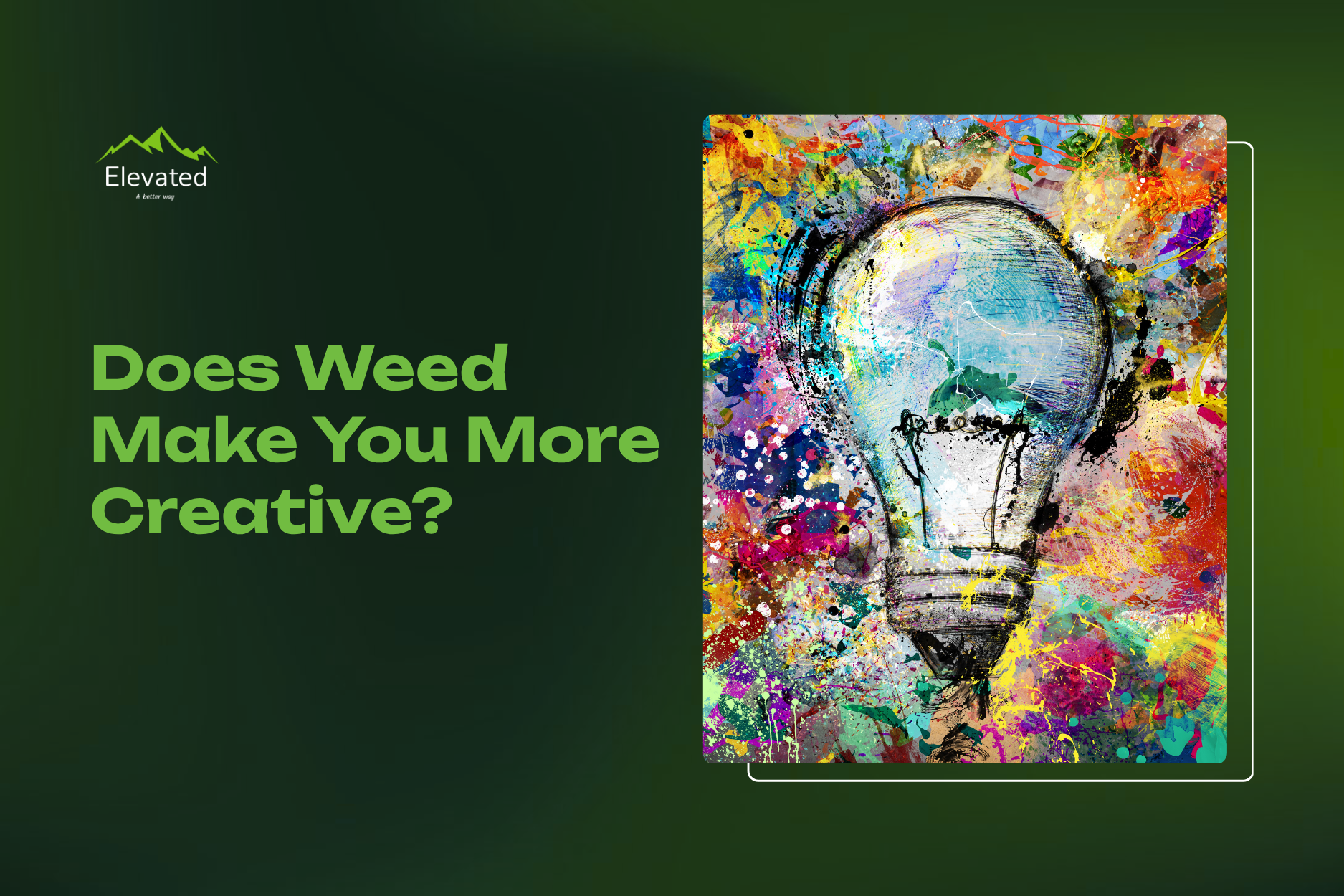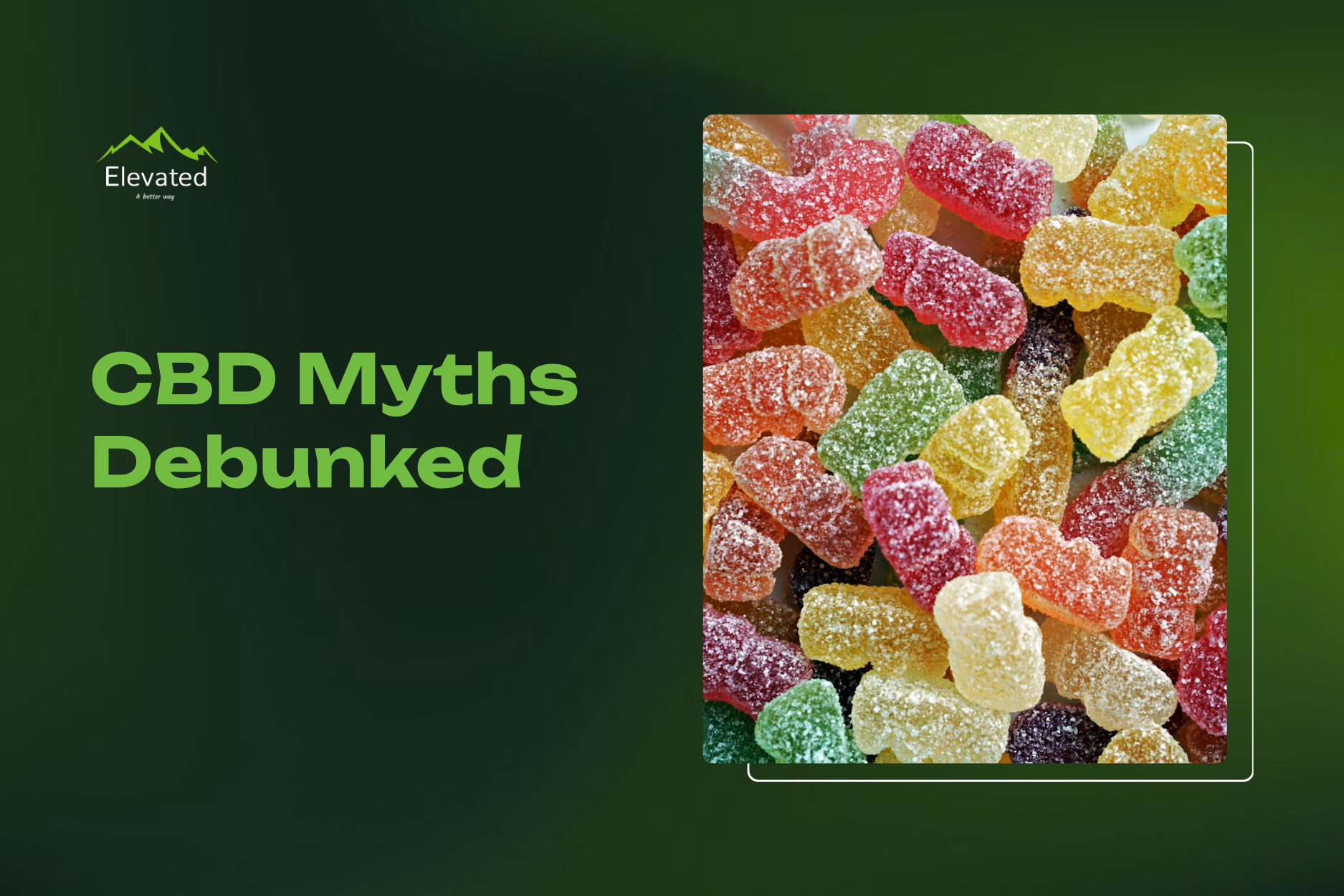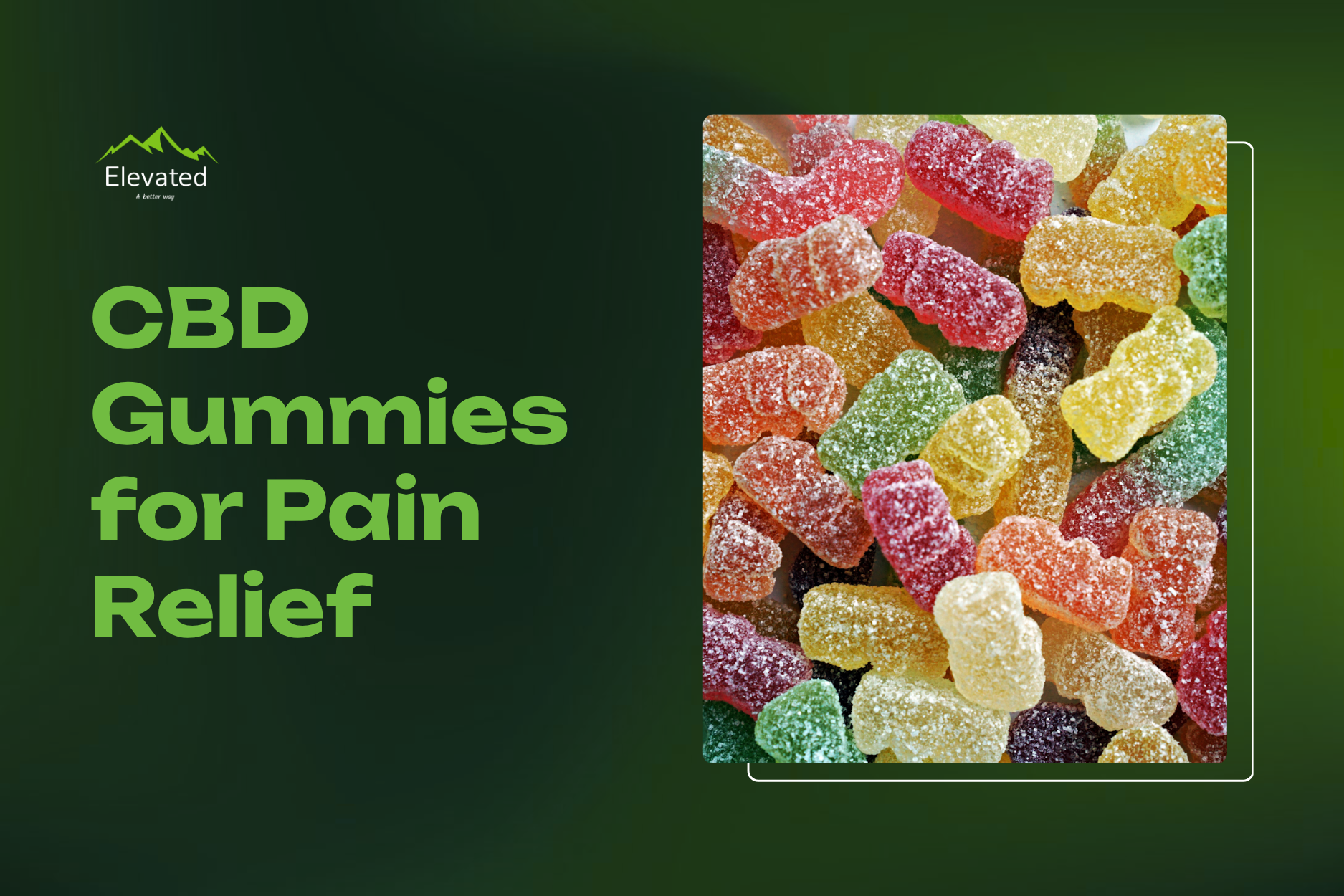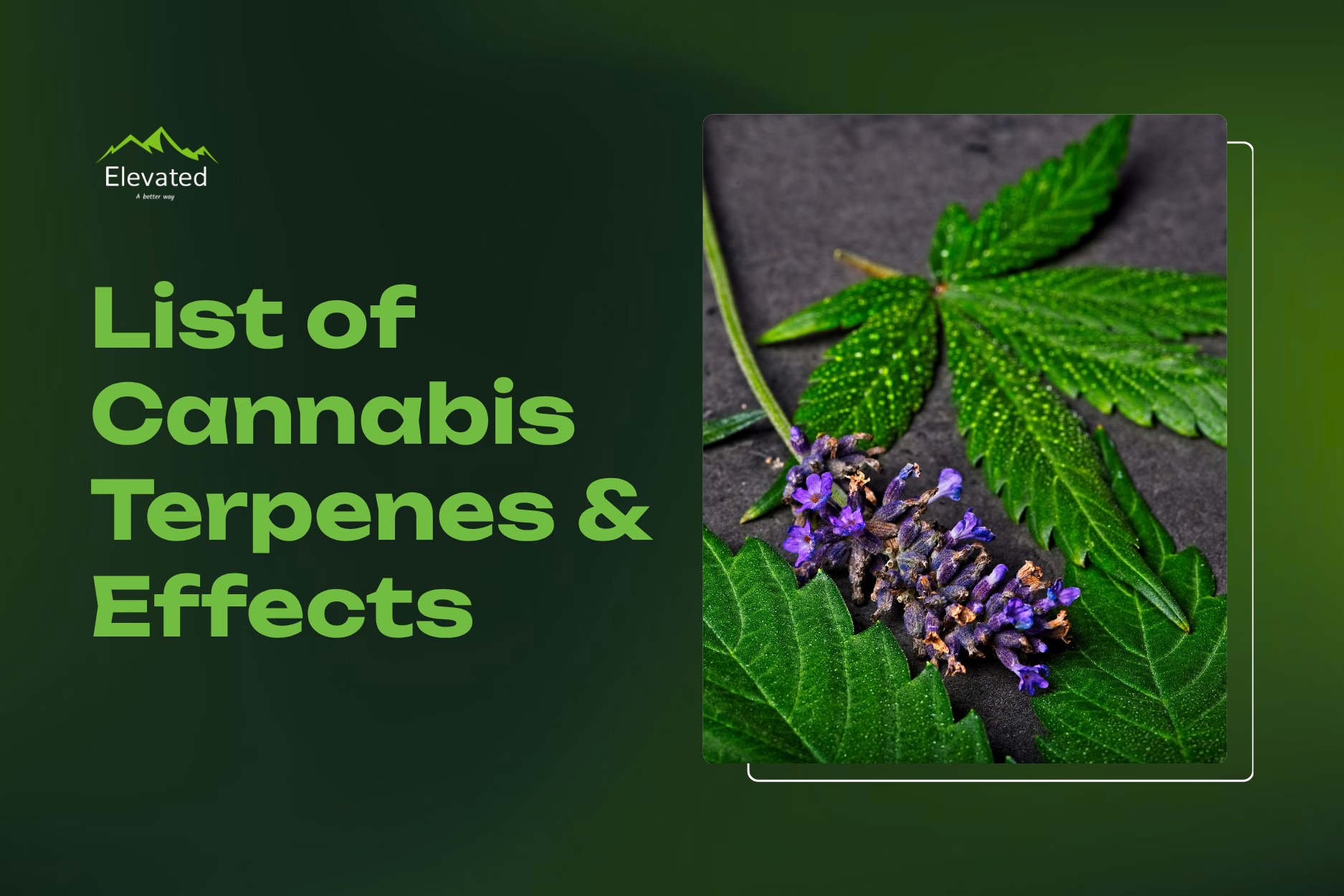CBD and Meditation: Finding Calm Through Balance
The wellness world is shifting gears. Across Montana, more people are turning to practices that bring balance to their days. Breathwork, yoga, CBD, and meditation have become part of a lifestyle that values stillness in a fast-paced world.
Meditation trains the mind to slow its pace, and many people are finding that CBD helps the body follow that same rhythm.
CBD brings a calm that feels clear and centered. Regular meditators describe an easier flow into focus and a smoother return afterward. For beginners, CBD can settle the physical restlessness that makes sitting still feel out of reach.
It connects the body and breath in a way that feels natural and steady.
In the sections ahead, we’ll look at how CBD supports mindfulness, how to time and dose it for meditation, and why some people blend CBD and THC for balance.
You’ll also see which Elevated edibles fit best with mindful routines, from light microdose mints to slow-release gummies made right here at home.

Understanding the CBD Calm Without the High
Meditation aims for steady attention and relaxed awareness. CBD supports that goal by interacting with biological systems that govern stress reactivity, mood, and focus, which helps many people settle into practice with fewer physical distractions.
What Exactly Is CBD?
Cannabidiol, or CBD, is a non-intoxicating cannabinoid produced by the cannabis plant. It does not alter perception like THC, which makes it suitable for meditators who want clarity without euphoria.
CBD influences multiple signaling pathways rather than binding strongly to CB1 receptors, including effects on serotonin and GABA systems reported across mechanistic reviews.
How CBD Works in the Body
The endocannabinoid system, known as the ECS, maintains internal balance across mood, stress responses, sleep, and attention. A key ECS messenger is anandamide, often called the bliss molecule, which binds cannabinoid receptors and is regulated by transport proteins and metabolic enzymes.
CBD can raise anandamide tone indirectly. Laboratory and translational work show that CBD interferes with anandamide transport to the enzyme FAAH and can inhibit its breakdown, which prolongs anandamide signaling and supports homeostasis.
These mechanisms map to outcomes that matter for practice. Human experiments using standardized stress challenges report that single oral doses of CBD reduce anxiety in simulated public speaking, with several studies finding benefits around 300 to 600 mg and a pattern consistent with a moderate dose sweet spot.
Is CBD Legal and Safe?
At the federal level in the United States, hemp and its derivatives are lawful if they contain no more than 0.3 percent delta-9 THC by dry weight, as defined in the 2018 Farm Bill. In Montana, hemp production operates under a USDA-approved state plan that requires licensing and compliance with state code, aligning with the federal definition.
Safety profiles from international health authorities describe CBD as generally well tolerated and non-addictive in humans, with adverse events that are typically mild. Interactions with certain medications are possible, which is why consumers should check labels and discuss use with a clinician when taking other drugs.
For practical use in meditation, two guardrails improve outcomes.
First, verify third-party lab testing that confirms cannabinoid content and screens for contaminants. Second, start with conservative doses and evaluate timing relative to practice, since individual responses vary and the evidence suggests a non-linear dose response in acute anxiety models.
Meditation — The Ancient Practice of Presence
Meditation has existed for thousands of years as a practice of awareness and balance. It was never designed as an escape but as a way to observe the movement of thought and emotion without reacting to it.
In a world defined by constant motion, meditation offers a rare kind of stillness that restores the mind’s natural rhythm.
Modern science now validates what ancient teachers intuited: consistent meditation supports measurable improvements in mental clarity, emotional stability, and overall well-being.
A Quick Look Back — From Buddha to Billings
The earliest records of meditation appear in India around 1500 BCE within the Vedic traditions, later refined through Hindu and Buddhist philosophy. Early practitioners viewed it as a disciplined path toward insight and compassion.
Over centuries, these techniques spread through Asia and eventually the West, evolving into the mindfulness movement familiar today.
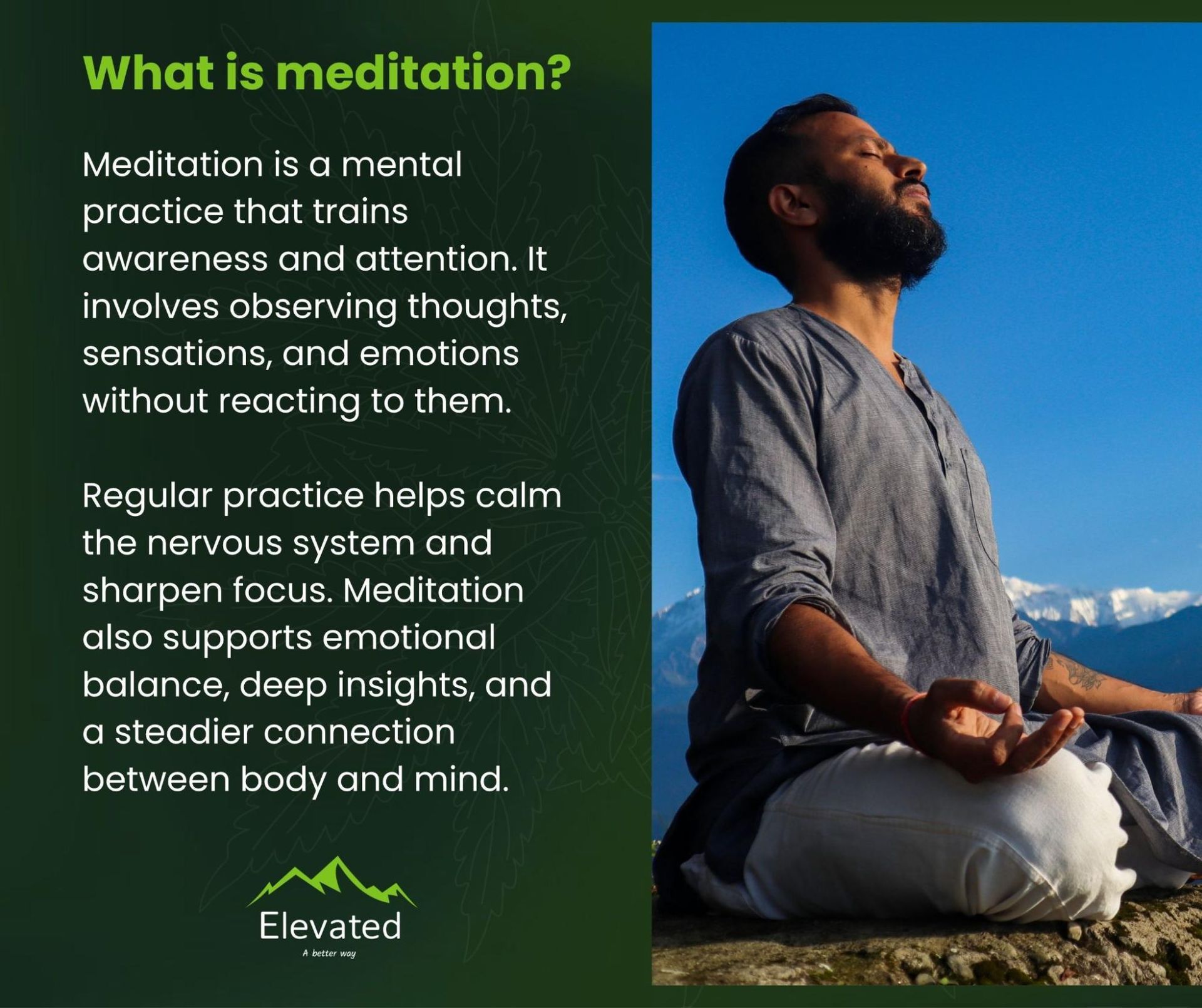
Contemporary research confirms many of those ancient insights. Studies from Harvard Medical School demonstrate that regular mindfulness practice reduces stress and improves emotional regulation.
What Actually Happens During Meditation
Meditation influences both physiology and cognition in observable ways:
- Heart rate and blood pressure decrease, signaling a shift into parasympathetic regulation.
- Cortisol levels drop, helping to rebalance hormonal stress responses and lower inflammation.
- Neural circuits involved in focus and emotion strengthen through structural changes in the prefrontal cortex and amygdala.
- Cognitive functions improve, with better concentration, working memory, and adaptability under pressure.
The experience often feels like a gradual quieting, where mental noise fades and awareness expands. With practice, that sense of equilibrium begins to extend beyond meditation itself and into ordinary moments.
The Common Struggle
Beginners often encounter distraction, restlessness, or frustration when they first sit in silence.
The mind tends to wander, replay conversations, or plan the next task. This is a natural response from a nervous system conditioned for stimulation. The process of returning to the breath again and again is the essence of the training.
This is also where some practitioners explore tools that support balance.
A calm body allows for a still mind, and complementary approaches such as controlled breathing, herbal tea, or gentle CBD intake can ease the transition into focus. The goal is not sedation but alignment, helping the body and mind settle into the same rhythm so that awareness can unfold without effort.
How CBD Enhances Meditation
CBD and meditation share a common purpose: to bring the body and mind into the same rhythm. Meditation trains awareness through breath and observation, while CBD supports the physiological foundation that makes that awareness possible.
Used together, they form a balanced approach to relaxation that is both grounded and sustainable.
Why CBD and Meditation Work So Well Together
CBD acts on the body’s endocannabinoid system to regulate stress responses, ease muscle tension, and moderate the biochemical signals that cause anxiety. When the nervous system is calm, the mind can settle more naturally into focus.
Meditation builds on that foundation by training awareness to stay steady through distraction.
The combination works through complementarity. CBD helps quiet the body’s internal static so that mindfulness can deepen without strain. Meditation then amplifies those effects by reinforcing calm through intention and attention.
Many practitioners describe the result as a clear, even stillness that feels less forced and more accessible.
Real-World Experiences and Science
In online mindfulness forums, many practitioners describe how small doses of CBD help them “drop into” meditation more quickly. Some use topical applications to release neck or shoulder tension before sitting, while others prefer sublingual oils for mental calm without drowsiness.
Scientific findings support these observations. Research published in Frontiers in Psychology reports that CBD can reduce anxiety levels and enhance emotional regulation by interacting with serotonin receptors.
A review in Springer Nature outlines its ability to moderate neural activity associated with fear and rumination. These mechanisms align directly with the goals of meditation: reduced stress, greater focus, and a more stable emotional baseline.
Together, the experiential reports and research suggest that CBD does not replace mindfulness practice but supports the physiological state that allows it to flourish.
Finding Your Dose and Timing
The most effective approach is gradual and consistent.
- Begin with a
low dose, around 5 to 10 milligrams of CBD, taken 30 to 45 minutes before meditation.
- Increase slowly over several sessions until you reach what many describe as a “calm zone,” where the body feels relaxed but alert.
- Daily microdosing builds a steady rhythm in the endocannabinoid system, helping maintain balance even outside meditation sessions.
Consistency matters more than intensity. The goal is not sedation but stability, allowing calm to arise naturally with each practice.
Forms That Fit the Practice
Different forms of CBD can complement different styles of meditation:
- Oils provide rapid onset and work well before shorter sessions.
- Edibles deliver sustained calm that can carry through longer meditations or evening routines.
- Topicals ease muscle tightness before yoga or seated practice.
Each form has its own timing profile. Experiment with onset and duration to find what best supports your individual rhythm of mindfulness.
THC, CBD, and the Deeper Layers of Mindfulness
Meditation invites the mind to observe without judgment and the body to relax without losing awareness. For some, the introduction of cannabinoids such as CBD or THC adds another dimension to that practice.
Both compounds interact with the body’s endocannabinoid system, yet they do so in distinct ways that can alter the tone of a meditative experience. CBD promotes steady calm without intoxication, while THC brings perceptual depth and a subtle shift in consciousness.
Understanding how these two work together can help practitioners choose the balance that supports presence rather than distraction.
Why Some Meditators Blend CBD and THC
A growing number of experienced meditators report that small amounts of THC enhance sensory perception, making sound, touch, and breath feel more vivid. When used mindfully, this can deepen awareness during yoga, breathwork, or stillness practices.
At the same time, THC can sometimes amplify internal noise or anxious thought loops if taken in excess.
CBD acts as a stabilizer in this context. It can moderate the psychoactive impact of THC by influencing the same receptor pathways, particularly CB1 and serotonin systems, helping to maintain clarity while preserving calm.
The outcome depends heavily on the ratio of the two cannabinoids. A balanced or CBD-forward ratio often supports relaxed focus, whereas higher THC levels can be more stimulating.
Finding the right point between those effects is best done gradually and, whenever possible, with the guidance of a knowledgeable budtender. One of the best strains Elevated has that hits the right ratio is Huckleberry Web, which has twice as much CBD as THC and provides meditators with the right combination of relaxation and intense focus.

Proceed with Caution
The experiences are not straightforward when THC enters deep meditation practice. Some users note enhanced sensory flow, while others mention disorientation or difficulty maintaining concentration. The variability comes down to dosage, timing, and individual tolerance.
It is worth remembering that combining THC with breath-focused disciplines can influence heart rate and alter proprioception, which may pull attention away from awareness training.
Responsible use means starting with a minimal dose, observing effects carefully, and keeping a record of how each session feels. Grounding practices such as stretching, hydration, and journaling can help maintain equilibrium.
Safety, patience, and personalization are the foundation of any mindful approach.
Calm Is a Practice, Not a Shortcut

As more and more people embrace meditation as a part of their lifestyle, it’s worth repeating this technique requires a serious approach. It’s a thousand-year tradition that unlocks considerable benefits for the mind and the body, so you should approach it with the appropriate readiness to open yourself to change.
For some people, CBD and THC can be triggers that help them get away from worldly issues and wade deep into their subconscious. While these chemicals are not central to meditation, they can be valuable tools that make it more effective, not to mention more pleasant.
Whenever you feel ready to bring more calm into your day, just visit your nearest Elevated Montana location or explore our online menu to discover CBD edibles, oils, and topicals crafted for balance, clarity, and mindful living.
Disclaimer
The information provided in this article is intended for educational purposes only and should not be taken as medical advice. CBD and THC products affect individuals differently, and results can vary based on dosage, body chemistry, and product formulation. Always consult a qualified healthcare professional before using cannabis products, especially if you have medical conditions, are pregnant or nursing, or are taking prescription medications.
References
Bergamaschi, M. M., Queiroz, R. H. C., Chagas, M. H. N., de Oliveira, D. C. G., De Martinis, B. S., Kapczinski, F., Quevedo, J., Roesler, R., Schröder, N., Nardi, A. E., Martín-Santos, R., Hallak, J. E. C., Zuardi, A. W., & Crippa, J. A. S. (2011). Cannabidiol reduces the anxiety induced by simulated public speaking in treatment-naïve social phobia patients. Neuropsychopharmacology, 36(6),
Blessing, E. M., Steenkamp, M. M., Manzanares, J., & Marmar, C. R. (2015). Cannabidiol as a potential treatment for anxiety disorders. Neurotherapeutics, 12(4), 825–836.
Goyal, M., Singh, S., Sibinga, E. M. S., Gould, N. F., Rowland-Seymour, A., Sharma, R., Berger, Z., Sleicher, D., Maron, D. D., Shihab, H. M., Ranasinghe, P. D., Linn, S., Saha, S., Bass, E. B., & Haythornthwaite, J. A. (2014). Meditation programs for psychological stress and well-being: A systematic review and meta-analysis. JAMA Internal Medicine, 174(3), 357–368.
Lu, H.-C., & Mackie, K. (2016). An introduction to the endogenous cannabinoid system. Biological Psychiatry, 79(7), 516–525.
Sanada, K., Montero-Marín, J., Alda Díez, M., Salas-Valero, M., Pérez-Yus, M. C., Morillo, H., Demarzo, M. M. P., García-Toro, M., & García-Campayo, J. (2016). Effects of mindfulness-based interventions on salivary cortisol in healthy adults: A meta-analytical review. Frontiers in Physiology, 7, Article 471.
Tang, Y.-Y., Hölzel, B. K., & Posner, M. I. (2015). The neuroscience of mindfulness meditation. Nature Reviews Neuroscience, 16(4), 213–225.

